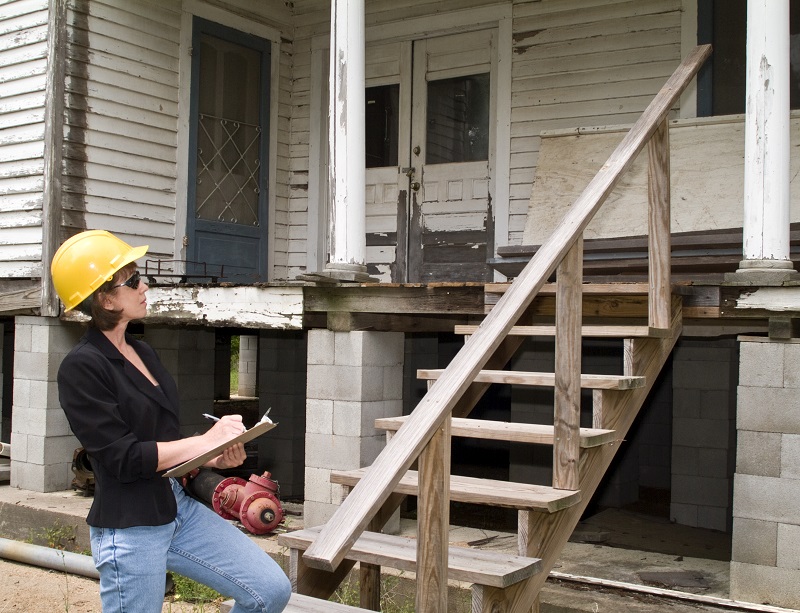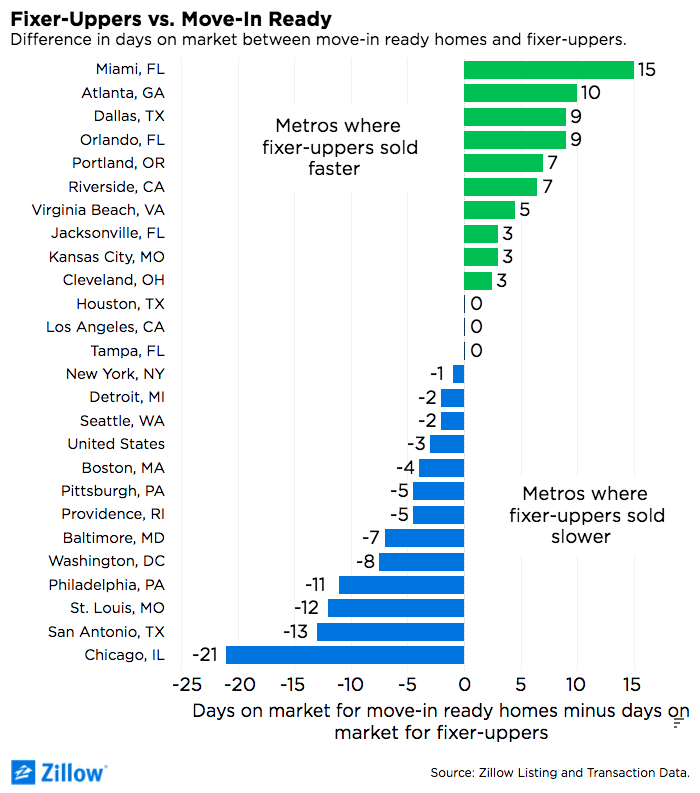Even Fixer-Uppers Are Flying Off the Market
In some markets, fixer uppers fly off the market faster than other listings: In Miami, the median fixer upper took 15 fewer days to go pending than the median move-in ready listing. In Atlanta, the median fixer upper went pending in 10 fewer days, and Dallas and Orlando, Fla., 9 fewer days.
- Fixer-uppers sell in almost the same time as other listings, and sometimes faster.
- Fixer-uppers still represent a small portion of total homes for sale.
The real estate market has gotten so hot that even fixer-uppers are flying off the market, in many cases as quickly as other listings. It’s a surprising finding – typically, fixer-uppers are considered the long shots of residential real estate listings — but one that should encourage people who worry there’s no market for their beleaguered homes.
There’s a clear appetite for homes with rough edges: Listings from early 2017 with descriptions that mention “fixer,” “tlc,” “needs work” or “good bones” were slightly more likely to sell (period) than listings without those terms. Nationally, there’s a fraction of a percentage point difference between the share of fixer uppers and the share of non-fixer-uppers that go pending in 14, 30 and 60 days.
In some markets, fixer-uppers fly off the market faster than other listings: In Miami, the median fixer-upper took 15 fewer days to go pending than the median move-in ready listing. In Atlanta, the median fixer-upper went pending in 10 fewer days, and Dallas and Orlando, Fla., 9 fewer days.
The reason fixer-uppers are selling well, and so quickly, could be tied to how motivated the sellers of fixer-uppers, in particular, are — and how willing buyers are to settle for a home with baggage when there’s not much on the market.
Competition for homes is particularly hot in the lowest price tiers, which is where fixer uppers tend to be. There’s also the glamor element, with shows like HGTV’s “Fixer Upper,” “Flip or Flop” and “Rehab Addict” making under-loved homes downright irresistible.
Still, fixer-uppers represent a small portion of total homes for sale – from a fraction of a percent to 3 percent in each of the major markets we examined. Earlier research shows a strong (but unsurprising) relationship between the age of an area’s housing stock and the share of its listings that are fixer-uppers. The fact that listings in general are older than they used to be could be a harbinger of more fixer-uppers to come.

